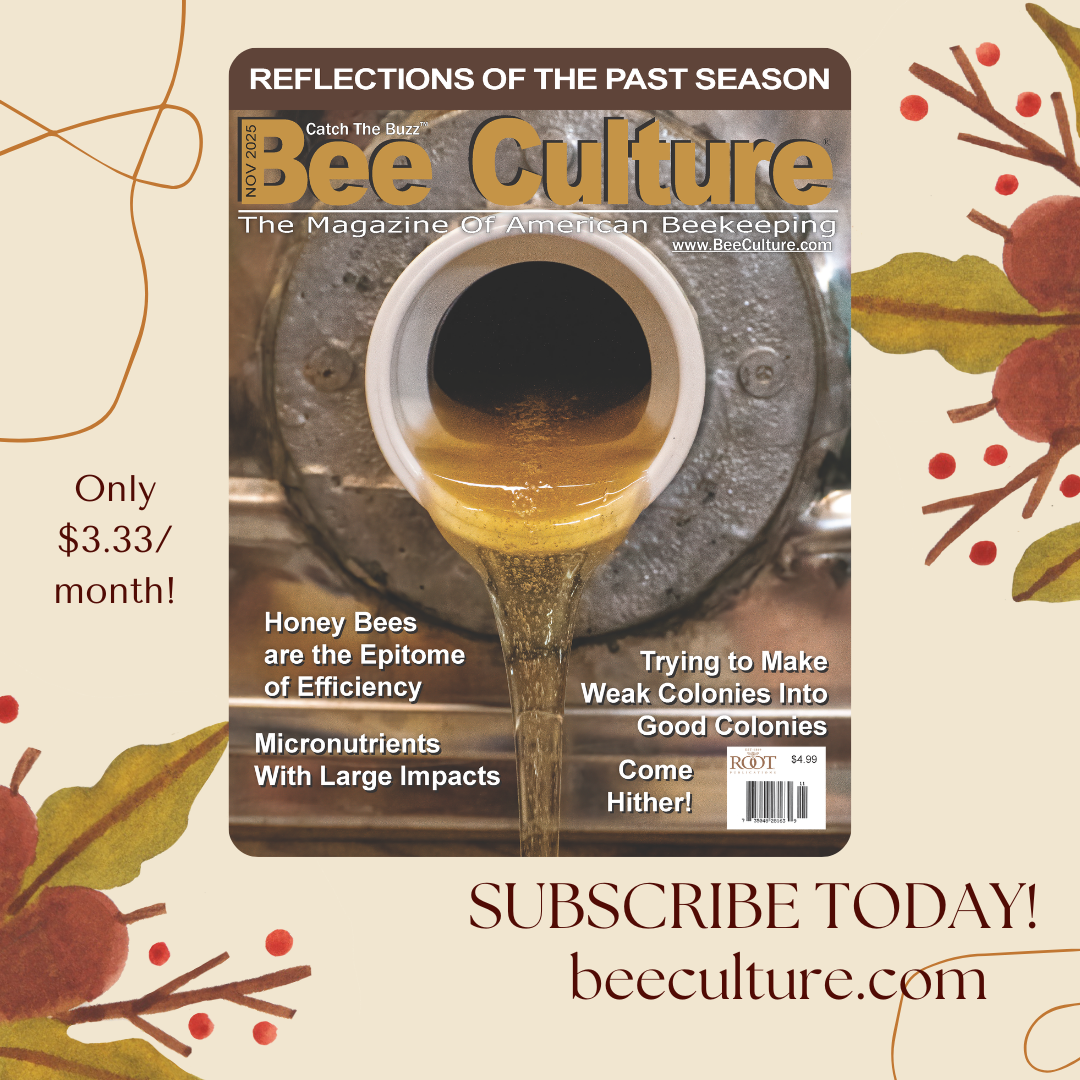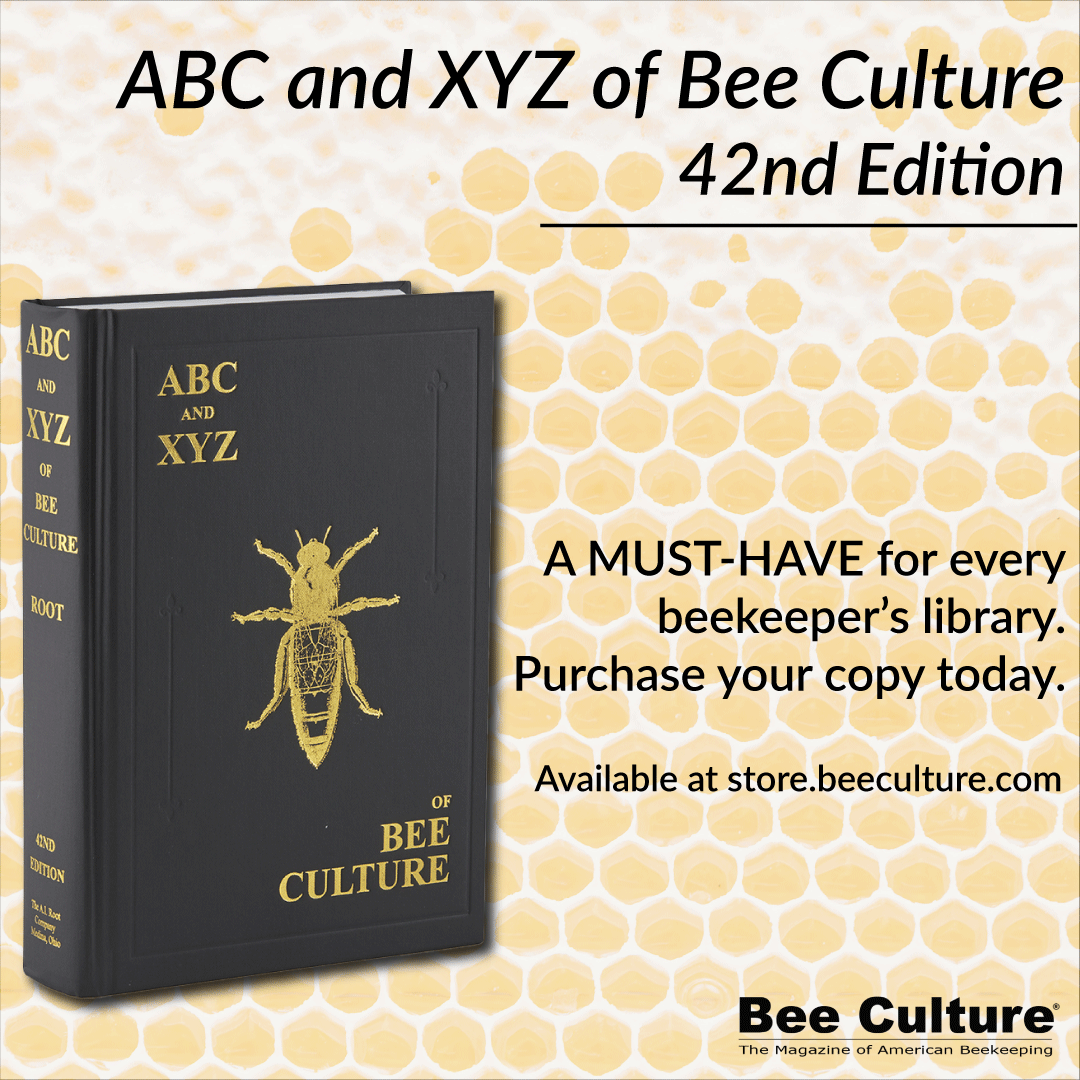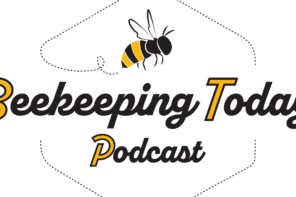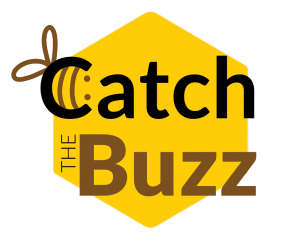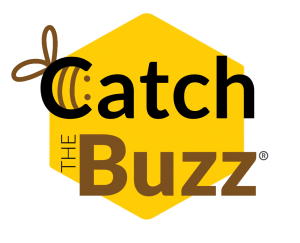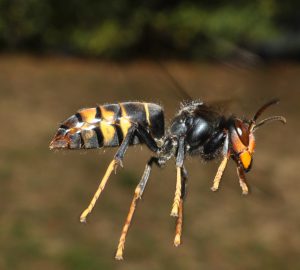
The Yellow-legged Hornet is a large wasp with distinctive yellow legs. In late summer and fall, YLHs frequently hover in front of bee hives to catch foragers as they return to their colony. Photo credit: Quentin Rome, Museum nationale d’Histoire naturelle, Paris.
Dr. Gard W. Otis
Professor Emeritus, University of Guelph, Canada and Adjunct Researcher, Institute of Bee Health, Bern, Switzerland
Amidst the reports of huge colony losses and the political chaos in the USA, the Yellow-legged Hornet (YLH; Vespa velutina) seems to be far from most beekeepers’ thoughts. This invasive hornet has contributed to the deaths of huge numbers of honeybee colonies in western Europe. Unfortunately, it has made its way to North America: it was first reported in Savannah, GA, in August, 2023, and 7 nests, all near the city of Savannah, were killed that year. Clearly some hornet colonies escaped detection and reared daughter queens because 50 additional hornet colonies were located and destroyed in Georgia and South Carolina last year. Overwintered queens should become active soon, but as of 18 March, 2025, there have been none reported yet.
In the last issue (#23) of the Yellow Legged Ledger of the Georgia Dept. of Agriculture, it was mentioned that Vespa velutina was found in four counties in Georgia last year: Effingham, Chatham, Bryan, and Liberty counties.
https://agr.georgia.gov/sites/default/files/documents/pests/Yellow-Legged-Ledger-Issue-23.pdf
Records from 4 counties is not good news. From the closest SE corner of Effingham Co. to the epicenter of the infestation east of Savannah is approximately 18 miles. It is ~25 miles from the closest point in Liberty Co. to the epicenter of the infestation. This represents an area of approximately 350 square miles (1000 square km) in Georgia over which the hornets were distributed last year. In South Carolina, most hornet detections were in and near Hilton Head Island. There, the hornets have likely colonized 100+ square miles. Combined, the area in which to survey and contain these invasive hornets is very large!
Spring is the period in the life cycle of the YLH when queens emerge from their winter diapause (similar to hibernation) and disperse. It is estimated from studies in Europe that some young queens fly as far as 30-45 miles (50-70 km) before settling and initiating nests. Additionally, diapausing queens may have been transported by truck, train, or ship to other more distant regions. The area in which the Yellow-legged Hornet may occur can be expected to expand greatly this year.
2025 provides regulatory officials the last opportunity to contain this invasive bee predator. In fact, it may already be too late. YLHs target bee hives, especially in late summer and fall, where they hover near entrances and catch returning foragers. Beekeepers throughout eastern USA can help in the effort to contain the YLH by photographing and reporting wasps “hawking” bees at their hives to their state apiary inspectors.
Photo Credit: The Yellow-legged Hornet is a large wasp with distinctive yellow legs. In late summer and fall, YLHs frequently hover in front of bee hives to catch foragers as they return to their colony. Photo credit: Quentin Rome, Museum nationale d’Histoire naturelle, Paris.

